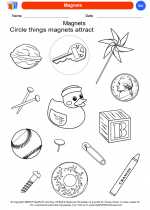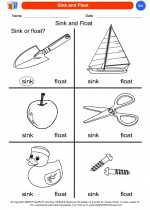Minerals
Minerals are naturally occurring inorganic substances that have a definite chemical composition and crystal structure. They are the building blocks of rocks and are formed through various geological processes.
Properties of Minerals
- Color: The color of a mineral can vary, but it is not always a reliable way to identify a mineral.
- Luster: Refers to the way light reflects off the surface of a mineral. It can be metallic, glassy, pearly, or dull.
- Hardness: A mineral's resistance to scratching. This property is measured using the Mohs scale of hardness.
- Cleavage and Fracture: Cleavage is the way a mineral breaks along flat surfaces, while fracture is the way it breaks with irregular surfaces.
- Crystal Structure: Minerals have a specific internal arrangement of atoms that forms a crystal lattice.
Types of Minerals
There are over 4,000 known minerals, but they can be classified into the following groups:
- Silicate Minerals: The most common group of minerals, which are composed of silicon and oxygen and often contain other elements like aluminum, iron, and magnesium.
- Carbonate Minerals: These minerals contain the carbonate ion (CO3) and are often formed in marine environments.
- Oxide Minerals: Minerals that are composed of oxygen and one or more other elements, such as iron, aluminum, or titanium.
- Sulfide Minerals: Minerals that contain sulfur combined with one or more metals.
- Sulfate Minerals: These minerals contain the sulfate ion (SO4) and are often found in arid environments.
- Native Elements: Minerals that are composed of a single element, such as gold, silver, and copper.
Uses of Minerals
Minerals have various uses in everyday life, including:
- Building materials (e.g., limestone, gypsum)
- Jewelry and decorative items (e.g., diamonds, quartz)
- Industrial applications (e.g., talc, graphite)
- Energy production (e.g., coal, uranium)
Studying Minerals
When studying minerals, it's important to:
- Learn to identify minerals based on their physical properties.
- Understand the formation processes of different minerals.
- Explore the economic and environmental importance of minerals.
- Appreciate the beauty and diversity of minerals in nature.
By understanding the properties, types, and uses of minerals, we can appreciate their significance in the natural world and in human society.
.◂Science Worksheets and Study Guides Kindergarten. Pushing, Moving, Pulling
Coloring Worksheet How heavy
How heavy  Coloring Worksheet
Coloring Worksheet How heavy
How heavy  Coloring Worksheet
Coloring Worksheet How Things Move
How Things Move  Coloring Worksheet
Coloring Worksheet How Things Move
How Things Move  Coloring Worksheet
Coloring Worksheet Light and Heat
Light and Heat  Coloring Worksheet
Coloring Worksheet Light and Heat
Light and Heat  Coloring Worksheet
Coloring Worksheet Magnets
Magnets  Coloring Worksheet
Coloring Worksheet Magnets
Magnets  Coloring Worksheet
Coloring Worksheet Pushing and Pulling
Pushing and Pulling  Coloring Worksheet
Coloring Worksheet Pushing and Pulling
Pushing and Pulling  Coloring Worksheet
Coloring Worksheet Simple Machines
Simple Machines  Coloring Worksheet
Coloring Worksheet Simple Machines
Simple Machines  Coloring Worksheet
Coloring Worksheet Sink and Float
Sink and Float  Coloring Worksheet
Coloring Worksheet Sink and Float
Sink and Float  Coloring Worksheet
Coloring Worksheet Sound All Around
Sound All Around  Coloring Worksheet
Coloring Worksheet Sound All Around
Sound All Around  Coloring Worksheet
Coloring Worksheet Up and Down
Up and Down  Coloring Worksheet
Coloring Worksheet Up and Down
Up and Down  Coloring Worksheet
Coloring Worksheet Wheels
Wheels  Coloring Worksheet
Coloring Worksheet Wheels
Wheels 

 Coloring Worksheet
Coloring Worksheet
 Coloring Worksheet
Coloring Worksheet
 Coloring Worksheet
Coloring Worksheet
 Coloring Worksheet
Coloring Worksheet
 Coloring Worksheet
Coloring Worksheet
 Coloring Worksheet
Coloring Worksheet
 Coloring Worksheet
Coloring Worksheet
 Coloring Worksheet
Coloring Worksheet
 Coloring Worksheet
Coloring Worksheet
 Coloring Worksheet
Coloring Worksheet
 Coloring Worksheet
Coloring Worksheet
 Coloring Worksheet
Coloring Worksheet
 Coloring Worksheet
Coloring Worksheet
 Coloring Worksheet
Coloring Worksheet
 Coloring Worksheet
Coloring Worksheet
 Coloring Worksheet
Coloring Worksheet
 Coloring Worksheet
Coloring Worksheet
 Coloring Worksheet
Coloring Worksheet
 Coloring Worksheet
Coloring Worksheet
